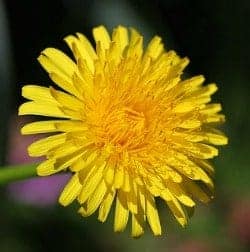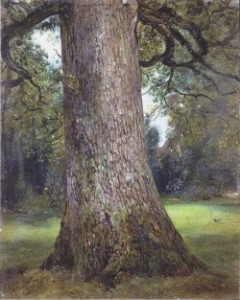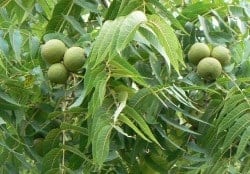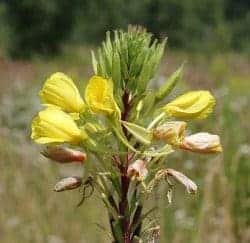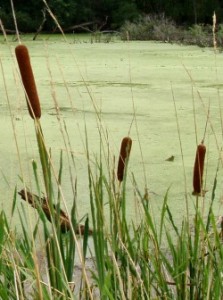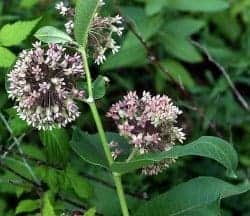For those who are learning about wild edibles to add to their daily diet or to harvest for restaurants, it only makes sense to focus on the best. For the sake of preparing for end times, survival situations, and emergencies in the woods, however, one should learn as many edible plants as possible. Perhaps many are not tasty or are time-consuming to harvest and/or prepare, but while these are very legitimate obstacles for every-day life in the “normal” world, you will likely enjoy even strange flavors when you are starving. The gathering of calories might turn into your top priority when there are none at hand. In order to prepare for emergencies, it is well worth learning about the wild plants that the field guides deem “trailside nibbles” or “survival foods”.
SKIP AHEAD
Tree Bark
Another tree I have consumed a bit of is White Pine. While I was stripping bark from the logs for my log cabin, I chewed on the inner bark and prepared it as a “tea” (decoction- material is simmered, not just steeped). I did not get around to grinding it to prepare as meal, as the Native Americans did with many of the barks they used as food. It was enough work for my spare time to drag logs through the snow and carve notches in them. Plus, I am still trying to figure out just how much of the evergreen trees are safe to consume. Pines and their relatives have been important survival foods as well as winter foods, providing many medicinal and nutritional benefits. However, there is concern regarding ingesting too many of the thick, resinous compounds in the pitch. These agents give the evergreens many of their medicinal properties, but can gum up the kidneys if over-consumed. Perhaps Native Americans knew things about preparing these barks that have been lost to the modern world. When the end times come, however, we might be wishing we did our research.
Many other trees have edible inner bark, such as Poplar (though it was probably more often used to feed horses so that more desirable food could be hunted) and Ash.
Additional Foods From Trees
It is much more common today to consume the needles and small twigs of the evergreens by preparing as a tea, than to strip the bark and prepare as gruel. By steeping the needles we can extract the vitamin C and many of the aromatic constituents. For survival situations, I am sure thicker inner bark has more to offer nutritionally.
A major consideration for emergency food, are the winter caches of wildlife. Squirrels and other critters store piles of acorns, nuts, and seeds, which can be found by digging through leafy brush piles and other areas conducive to storage of such foods.
Roots
Garlic Mustard, because of its pungency, is usually used as a condiment (like Horseradish) more than a vegetable. When push comes to shove, however, you might overcome the bitter, pungent flavor, or figure out how to reduce it through cooking. Yellow Dock is similar in that it is avoided largely because of its intense bitter taste, and because being perennial it will get tougher with age. Yellow Dock species are quite common and I am very often told by budding wild food foragers that they began eating the greens. Usually I assume that if someone is eating Yellow Dock they have not learned about the other, more palatable options, and I tell them so. Often, when seeing them at a later time I am informed that they moved on from Yellow Dock to tastier greens. However, concerning survival, Yellow Dock might be an option.
Strong flavors generally indicate that the plant is not suitable for consumption in large amounts. Bitter, pungent, and sour flavors are commonly indicative of constituents that shouldn’t be consumed in large amounts. There is a reason we appreciate these flavors in relatively small doses. Likewise, there is a reason we like the sweet flavor – it is the mark of calories (food energy). All our macronutrients are sweet, which includes carbohydrates, proteins, and fat. Roots that are relatively bland or sweet, such as Evening Primrose and Burdock, are generally more edible. Wild Carrot also has a bit of pungency, and although Carrots are staple food, many members of the Carrot Family (Apiaceae) are quite toxic. It should not be assumed that because something tastes good it is edible. It is said that Poison Hemlock tasted quite good to those who were able to tell us so before they died. Cattails produce very starchy roots (rhizomes) along with many other edible portions.
Cattail
Cattails were called “Nature’s Pantry” by Euell Gibbons, one of our nation’s first famous wild food experts. The rhizomes store much starch, which can be easily extracted to used for porridge or baking. The young shoots are edible as are the bases of younger leaves. The best vegetable portion is the young flower stalk, including flower, while it is tender and still wrapped inside the leaves. The pollen can also be gathered, which is very nutritious.
Because starch is very water soluble and due to the structure of Cattail rhizomes the rhizomes can be pounded in a bucket of water. The starch is then suspended in the water making it possible to strain out the fibrous strands, joints, and peel. It can then be left to sit so that the starch settles to the bottom. Maybe not the ideal form of carbohydrates to the modern man, but an abundant source of nutrition in a survival situation.
The vegetable portion can be nibbled off the bottoms of leaves that are young enough to have a tender portion intact. The young shoots at the end of the rhizomes can also be harvested. In my opinion, one of the best wild vegetables is the flower stalk. Many old books refer to treating it like corn on the cob. This has led to the misunderstanding that one should eat the flower (the “cat tail”) off of the stalk. However, it is the stalk itself, when tender, that is the delicious vegetable. It can be found by peeling the coarser material away to reveal the tender part. You can develop an eye for the ones with flower stalks developing by the way the plant elongates upward during growth. It resembles corn on the cob because it can be cooked in the same way, which is also why it is a very convenient camping or survival food. Simply pick the whole above-ground/water plant by pulling straight up so that it separates from the rhizome. You can confirm that is has a flower stalk by observing the base. If there is no stalk, you will only see the crescent-shaped overlapping leaf bases. If it has a flower stalk you will see it’s round base. Then throw the plants, green leaves and all, directly onto some hot coals. Turn them until thoroughly cooked. When done, simply peel back the tough parts to reveal a tender, cooked vegetable within.
The pollen is gathered after the flowers emerge above the leafy portions by shaking the yellow powder from the plants into some kind of container. It is very nutritious and should be considered an important emergency food and nutritional supplement. Many other pollens, such as Pine, can be harvested as well.
Seeds
I have already mentioned seeds from trees above (in the section “Additonal Foods from Trees”). Here we will consider seeds from shrubs and herbaceous plants. Perhaps the best-known staple of our Northeastern woods is the Hazelnut. Although, because wildlife love it Hazelnuts are often hard to come by. Still, the survivalist should learn to identify the shrub.
Amaranth seeds, though small and covered by a tough outer layer, are edible and very nutritious. Plus, the young plants are good as cooked greens. Likewise, Lambsquarters, one of the best cooked greens from the wild, can also provide nutritious seeds.
Jewelweed, which is well-known as the poison ivy remedy, has edible seeds. They pop from the ballistic seed pods when ripe and disturbed (by wind or animal). Pinched just right, the seeds can be released into your hand. Small, but they taste just like Walnuts. The young shoots of Jewelweed have raised concerns regarding their edibility. I used to eat them when a few inches tall and after cooked, but I have not done so in years.
Vegetables
There are many wild vegetables. It is worth learning the lesser-desirable species as well as those commonly sought after. However, vegetables are not the focus of this article because in emergency survival situations we are often more focused on calories. Although greens are nutritious, they are not calorie rich. Still, in survival situations there might be need to focus on certain nutrients that are available from vegetative plant parts. Many greens are high in nutrients that would be cooked out of other plant foods. For this reason, it is important to include some lightly cooked or raw vegetables in the diet.
Related: Choosing the Best Survival Tools for Your Bug Out Bag
Dandelion, in spite of its strong bitter flavor, is a safe source of edible leaves. They are high in calcium, iron, and many other nutrients. The flowers are also eaten. The root is too bitter to be a common vegetable, but is often dried and/or roasted for tea. Sorrel, including both Wood Sorrels and Sheep Sorrel, are edible and tasty, but shouldn’t be eaten in large amounts because of the oxalic acid content. Oxalic acid binds easily with calcium making the calcium unabsorbable and potentially leading to other problems, like kidney stones. Lambsquarters (mentioned above) is also quite high in oxalic acid, as is Purslane. One should be aware of these things, as it very well may come into consideration in a survival situation. Purslane has many nutritional benefits, most notably that it is high in essential fatty acids for a vegetable.
Conclusion
The plants listed above are only a few of the many options in the wild. There are choice edibles – those few species we seek after as even superior to domestic veggies. There are the deadly poisonous – some so much so that one bite can be fatal. Then, there is a large spectrum in between. The vast majority of plants are somewhere between choice and deadly, and the vast majority of them are not consumed. In an emergency that includes a food shortage, it could be very useful to know obscure edible properties of plants.
The survivalist should learn to identify the two ends of the spectrum first. Obviously, anybody at all interested in the subject wants to know about the best edibles. It is perhaps even more important, however, to first learn the most poisonous (watch for another article). If you know the handful of deadly plants to avoid, you can more safely explore your options in an emergency even if you don’t know everything about all the plants at hand. Then, the survivalist can continue to explore the vast world of wild edibles in order to prepare for any situation.
Warning
In this article many wild plants are mentioned that might be toxic if prepared improperly, might have toxic parts even if other parts are edible, or might produce very real problems if consumed as part of a dramatically imbalanced diet (such as what might occur in a survival situation). I only mention them here. If you want to eat wild plants, ensure that you are thoroughly educated beyond what can be gleaned from a short blog article. Read books, attend walks, and seek out knowledgeable foragers.
Photos Courtesy of:
Rich Bradshaw
Julie Falk
All other photos are in the public domain.

